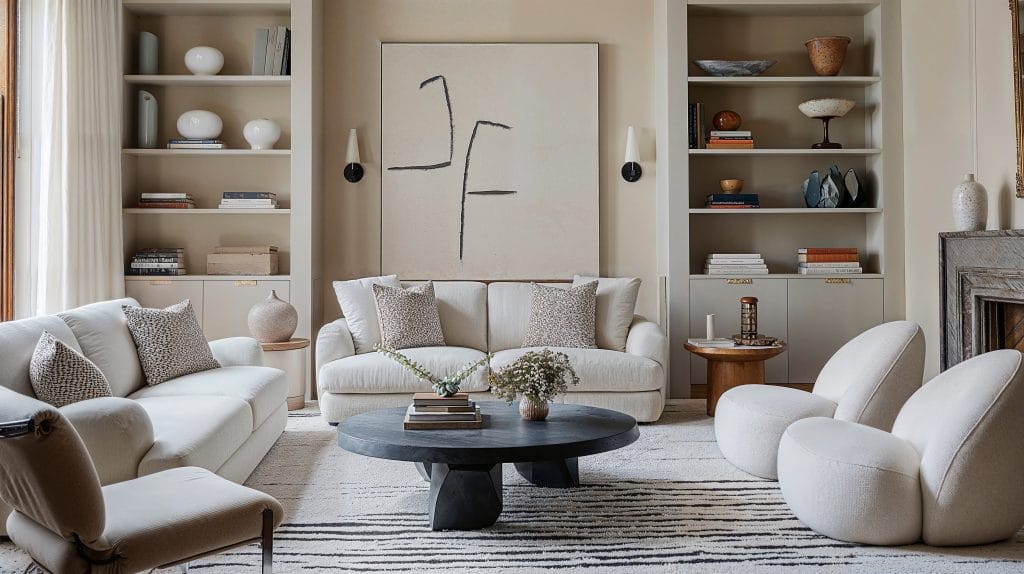Trusted Architecture Firm delivering world-class design solutions.
Trusted Architecture Firm delivering world-class design solutions.
Blog Article
Transform Your Home With Essential Principles of Interior Design and Looks
By recognizing the impact of shade concept and the significance of appearance and patterns, one can develop areas that are not only aesthetically attractive but additionally deeply individual. Accomplishing this equilibrium involves even more than mere decor; it encompasses a calculated arrangement and an eager understanding of exactly how each aspect interacts within a space.
Understanding Color Theory
Comprehending the concepts of color theory permits developers to create areas that reverberate emotionally with residents while meeting functional needs. Each category plays a vital duty in establishing harmony within a room.
The emotional influence of colors is extensive; cozy hues such as reds and oranges evoke energy and heat, while great tones like blues and greens promote calmness and harmony. In addition, making use of complementary colors enhances visual interest, producing striking contrasts that can raise a space's appeal.
Neutral shades, on the various other hand, act as a flexible background, enabling various other style aspects to radiate. It is necessary to take into consideration factors such as lighting and the room's purpose when selecting a shade scheme, as these can alter the perception of shades throughout the day.
Inevitably, a well-considered color design can change a room, cultivating a feeling of convenience and style that aligns with the residents' preferences. Proficiency of shade theory is, for that reason, an important skill for any kind of interior designer aiming to create unified and welcoming atmospheres.
Achieving Balance in Design
Just how can developers accomplish a sense of stability in their rooms? Achieving balance in design is basic to developing harmonious interiors. Developers can utilize three key kinds of balance: balanced, asymmetrical, and radial. Symmetrical balance entails setting up elements equally around a main point, fostering a sense of order and tranquility. This kind typically features sets of furniture or artwork, improving aesthetic stability.
Unbalanced balance, on the various other hand, counts on differing aspects that still achieve a natural appearance. This method permits more dynamic and casual arrangements, supplying interest while preserving stability. By thoroughly selecting varying dimensions, colors, and structures, developers can create a visually engaging space that feels balanced yet energetic.
Radial equilibrium emphasizes a central prime focus with components radiating external. This design is commonly seen in circular designs, where furnishings and design produce a natural border that draws the eye inward.
Inevitably, accomplishing equilibrium calls for thoughtful consideration of scale, proportion, and the connections in between components. miami interior design. By skillfully applying these balance principles, designers can transform rooms right into settings that really feel both aesthetically pleasing and functionally harmonious, enhancing the total experience for residents
Value of Spatial Recognition

An eager feeling of spatial awareness allows designers to determine prime focus within an area, leading the viewer's attention to essential attributes while maintaining a general sense of unity. It additionally pop over to this web-site assists in the strategic placement of lighting, which can considerably affect the assumption of room and state of mind. Understanding spatial relationships enables the designer to provide to the certain requirements of residents, ensuring that each location offers its desired function without jeopardizing aesthetic appeals.
Ultimately, spatial awareness is critical for making the most of the potential of any type of interior space. By carefully considering the interplay in between measurements, layout, and feature, designers can create settings that not only fulfill practical needs yet likewise stimulate a sense of convenience and appeal, improving the overall living experience.
Including Structure and Patterns
Welcoming a diverse array of textures and patterns can dramatically improve the aesthetic and tactile allure of an interior area. look at more info The tactical use of different products-- such as wood, steel, fabric, and rock-- creates depth and passion, making a room really feel more inviting and vibrant. Incorporating smooth surfaces with harsh appearances can establish a balance that attracts the eye and involves the senses.
When integrating patterns, consider both scale and repeating. Huge patterns can work as centerpieces, while smaller sized, refined styles can enhance other aspects without frustrating the space. Layering patterns, such as pairing floral pillows with candy striped throws, adds complexity and a feeling of consistency if executed thoughtfully.
It is also critical to preserve a cohesive color scheme, making sure that structures and patterns work together as opposed to complete for focus. By choosing a couple of essential structures and patterns, you can create an unified visual that mirrors your individual design while boosting the general atmosphere of the room. Ultimately, the mindful unification of these aspects can change a mundane space right into an innovative atmosphere rich with personality and warmth.
Customizing Your Space
Creating a room that shows your personality is essential to accomplishing a really inviting setting. Customization in interior decoration enables you to instill your special style and interests right into your home, transforming it from a plain shelter right into a haven that talks to that you look at this website are. Begin by choosing a color combination that resonates with your feelings-- bold tones can stimulate, while soft tones offer peace.
Integrate art work and design that mirror your enthusiasms, whether it be traveling, nature, or abstract concepts. Showing personal collections, such as books, pictures, or souvenirs, can stimulate cherished memories and develop focal points within an area. Additionally, take into consideration customizing useful pieces, like upholstered furniture, to line up with your aesthetic choices.

Conclusion
Finally, the improvement of a home via the crucial principles of interior decoration and aesthetics necessitates a comprehensive understanding of color theory, equilibrium, spatial recognition, structure, and customization. Each aspect adds considerably to producing an unified and practical living environment - interior design firms. By attentively integrating these concepts, people can boost the aesthetic appeal and psychological resonance of their areas, ultimately promoting a home that mirrors distinct identifications while giving comfort and practicality
Report this page